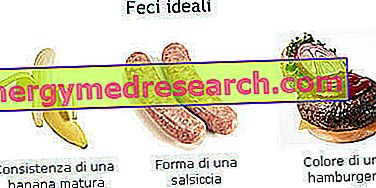What are Feces?
The faeces are the waste material of the organism that is eliminated by the rectum.
Under normal conditions, the stools are 75% water and 25% solid, including bacteria, undigested fibers, fat, inorganic matter (calcium and phosphates), mucus, desquamated intestinal cells and some proteins. A considerable part of the fecal mass is not of alimentary origin; the feces are in fact also formed during fasting.
Stool characteristics:- Color of Feces : brown due to the chemical conversion of bilirubin into urobilin and stercobilin by intestinal bacteria and enzymes.
- Stool smell: it is the result of the bacterial decomposition of proteins in the intestine.
- Feces consistency : soft with a cylindrical shape that has the size of the rectum.
- Stool pH : normally neutral or slightly alkaline (6.8 - 7.5).
- Amount of faeces : 150 to 300 g of faeces are produced daily.
The average passage time of undigested food residues in the human intestine is 50 hours in humans and 57 hours in women, with wide intra and interindividual variations (minimums well below 20 hours and maximums above 100 hours).

Did you know that ... 75% of the total weight of faeces is on average represented by water. This percentage can vary significantly in the presence of diarrhea or hard and dehydrated stools
Characteristics of Feces
Physical examination of the stool can help us understand the state of health of our digestive system. In particular, if one of the following anomalies is found, it is advisable to contact your doctor to undergo a check-up.
- The presence of blood in the stool indicates a source of intestinal bleeding.
- Provenance :
upper digestive tract: black tar color (melena);
lower digestive tract: bright red blood (rectorragia, hematochezia);
- colic bleeding: blood mixed with faeces;
rectal or anal bleeding: streaks of blood on the faeces or on toilet paper (haemorrhoids, fissures or tumors of the last intestinal tract).
- Provenance :
- Feces poorly formed, oily, fatty, foul-smelling, greyish with silvery reflections, which stick to the toilet bowl : steatorrhea (pathological condition in which fat loss with feces is exaggerated).
- Acolytic (clay-colored) stools: are the result of insufficient digestion of fats due to biliary obstruction.
- Presence of mucus or pus : ulcerative colitis, infectious colitis, villous tumors.
- Small, dry, hard stools : constipation (constipation), intestinal obstruction.
- With a marble-like appearance (glossy, slightly oxidized: irritable bowel syndrome.
- Gray and creamy feces : they are found in subjects with fat absorption disorders.
- Increased water content in faeces (diarrhea).
- Dark stools : excess iron in the diet, coal intake, gastric bleeding. In general, constipation is associated with dark stools, while diarrhea is lighter.
- Clear stools may also be a symptom of hepatitis and, more generally, of reduced activity in the liver or biliary tract.
In addition to the physical examination there are laboratory investigations to find the presence of alterations not visible to the naked eye (presence of occult blood in the feces, presence of infections etc.). To learn more, read the in-depth information relating to the stool test.



